


Notice: This is the official website of the All Empires History Community (Reg. 10 Feb 2002)
The Moors who Conquered and Civilized W. Europe |
Post Reply 
|
Page <12 |
| Author | ||
Kevinmeath 
Knight 
Joined: 16-May-2011 Location: Ireland Online Status: Offline Posts: 84 |
 Quote Quote  Reply Reply
 Topic: The Moors who Conquered and Civilized W. Europe Topic: The Moors who Conquered and Civilized W. EuropePosted: 14-Jun-2016 at 17:14 |
|
Please do explain this further? did the 'Brits' us firearms to subdue their enemies in the British Isles? |
||
|
cymru am byth
|
||
 |
||
Dino 
Janissary 
suspended Joined: 07-Jun-2016 Online Status: Offline Posts: 14 |
 Quote Quote  Reply Reply
 Posted: 13-Jun-2016 at 19:11 Posted: 13-Jun-2016 at 19:11 |
|
|
Benjamin Banneker was a free African American Genius, Dogon Moor and Mason. He was the author of the first almanac, surveyor, naturalist and farmer. Born in Baltimore County, Maryland, to a free African American woman and a freed Father from Dogon, who was formerly enslaved, Banneker had little formal education and was largely self-taught.
Born: November 9, 1731, Baltimore County, Maryland, MD Died: October 9, 1806, Baltimore County, Maryland, MD Nationality: American Parents: Mary Bannaky, Robert Bannaky
  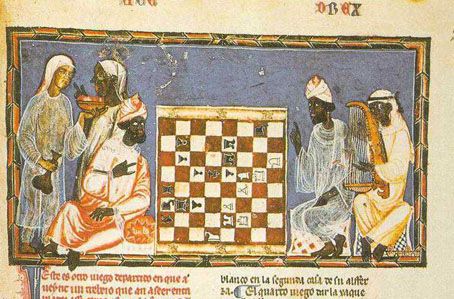 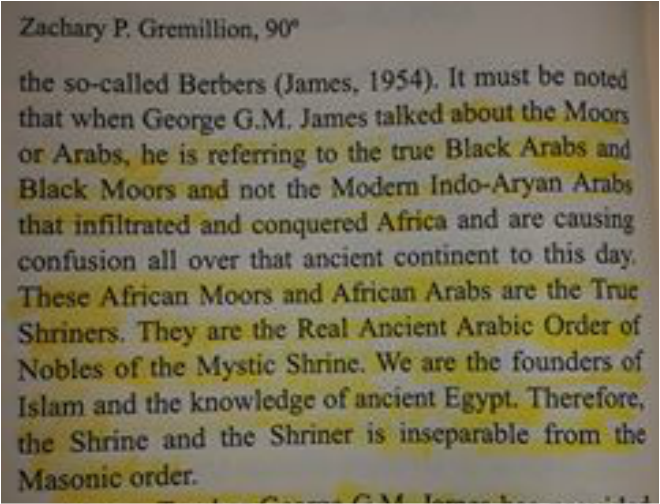  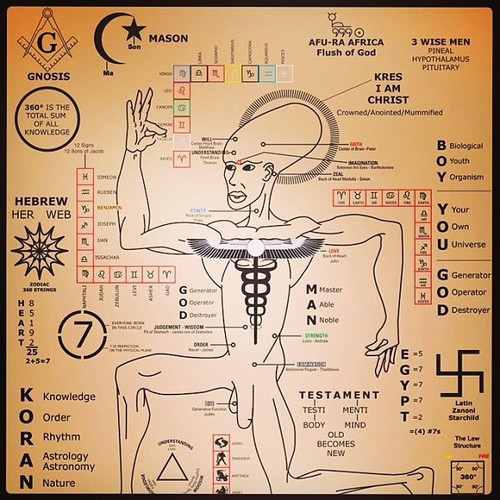 Edited by Dino - 13-Jun-2016 at 19:32 |
||
 |
||
Mosquito 
Caliph 

Suspended Joined: 05-Aug-2004 Location: Sarmatia Online Status: Offline Posts: 2537 |
 Quote Quote  Reply Reply
 Posted: 13-Jun-2016 at 14:52 Posted: 13-Jun-2016 at 14:52 |
|
|
This is the mummy of Ötzi, known as the iceman, it was found in iceberg. All European scientists were astonished when they found that he was not white but black. He died around 3300 year BC.
 Edited by Mosquito - 13-Jun-2016 at 14:59 |
||
|
"I am a pure-blooded Polish nobleman, without a single drop of bad blood, certainly not German blood" - Friedrich Nietzsche
|
||
 |
||
Mosquito 
Caliph 

Suspended Joined: 05-Aug-2004 Location: Sarmatia Online Status: Offline Posts: 2537 |
 Quote Quote  Reply Reply
 Posted: 13-Jun-2016 at 14:48 Posted: 13-Jun-2016 at 14:48 |
|
|
Excusme but it was you who have placed this statement over your picture:
"In 711 A.D. A Berber army led by general Tariq ibn Ziyad, invaded Iberia (Spain) and overthrew the White Visigoths (Western Goths)"
First who used it in big numbers were the Bohemian Hussites.
Indeed, great Roman commander Julius Caesar who landed in Britain have already described that most of the people who were living there were already black. |
||
|
"I am a pure-blooded Polish nobleman, without a single drop of bad blood, certainly not German blood" - Friedrich Nietzsche
|
||
 |
||
Dino 
Janissary 
suspended Joined: 07-Jun-2016 Online Status: Offline Posts: 14 |
 Quote Quote  Reply Reply
 Posted: 13-Jun-2016 at 11:28 Posted: 13-Jun-2016 at 11:28 |
|
Well that is your assumption that this painting is representing an 8th century Moorish army coming into Spain. I never stated that this painting was representing that army in 711. We do know however that firearms came into Europe through these African Muslims during this almost 800 year domination of Europe. We know that this African domination of Europe occurred despite in your own words the lack firearms for the Muslims. In fact the first army to ever fully utilize firearms as a main weapon were the Brits who subdued their enemies in the British Isles (which included many native black Europeans who had been there since the Neolithic). It was from the technology (like the compass, ships, regular bathing etc) brought into Europe by the Moors that the Brits got the launching pad that gave them their imperialistic name.
Edited by Dino - 13-Jun-2016 at 11:30 |
||
 |
||
Mosquito 
Caliph 

Suspended Joined: 05-Aug-2004 Location: Sarmatia Online Status: Offline Posts: 2537 |
 Quote Quote  Reply Reply
 Posted: 13-Jun-2016 at 11:07 Posted: 13-Jun-2016 at 11:07 |
|
Especialy concerning fact that in the 8th century the firearms were not yet invented while they appear on your picture. |
||
|
"I am a pure-blooded Polish nobleman, without a single drop of bad blood, certainly not German blood" - Friedrich Nietzsche
|
||
 |
||
Dino 
Janissary 
suspended Joined: 07-Jun-2016 Online Status: Offline Posts: 14 |
 Quote Quote  Reply Reply
 Posted: 13-Jun-2016 at 10:49 Posted: 13-Jun-2016 at 10:49 |
|
|
Firearms certainly were not the main nor even a significant source of the weaponry used by the Moors. The battles are described in the second video. The Moors were reputed for their fighting superiority especially against the Indo-European tribes who would in the later dynasties be formed into a slave army known as the "Silent Ones" because they could not speak the language.
 A European scholar sympathetic to the Spaniards remembered the conquest in this way: a. [T]he reins of their (Moors) horses were as fire, their faces black as pitch, their eyes shone like burning candles, their horses were swift as leopards and the riders fiercer than a wolf in a sheepfold at night . . . (nothing in here about good gunman). The noble Goths [the German rulers of Spain to whom Roderick belonged] were broken in an hour, quicker than tongue can tell. Oh luckless Spain! Quoted in Edward Scobie, The Moors and Portugal's Global Expansion, in Golden Age of the Moor, ed Ivan Van Sertima, US, Transaction Publishers, 1992, p.336 Nothing is bi
Edited by Dino - 20-Jun-2016 at 09:15 |
||
 |
||
Mosquito 
Caliph 

Suspended Joined: 05-Aug-2004 Location: Sarmatia Online Status: Offline Posts: 2537 |
 Quote Quote  Reply Reply
 Posted: 13-Jun-2016 at 10:26 Posted: 13-Jun-2016 at 10:26 |
|
Visigoths had no chance when the moors were using firearms against their knights already in 711 AD. |
||
|
"I am a pure-blooded Polish nobleman, without a single drop of bad blood, certainly not German blood" - Friedrich Nietzsche
|
||
 |
||
Dino 
Janissary 
suspended Joined: 07-Jun-2016 Online Status: Offline Posts: 14 |
 Quote Quote  Reply Reply
 Posted: 13-Jun-2016 at 10:23 Posted: 13-Jun-2016 at 10:23 |
|
|
The European Legacy of the Moors. The Drake jewel of Sir Francis Drake honoring his family's African-Moorish ancestry       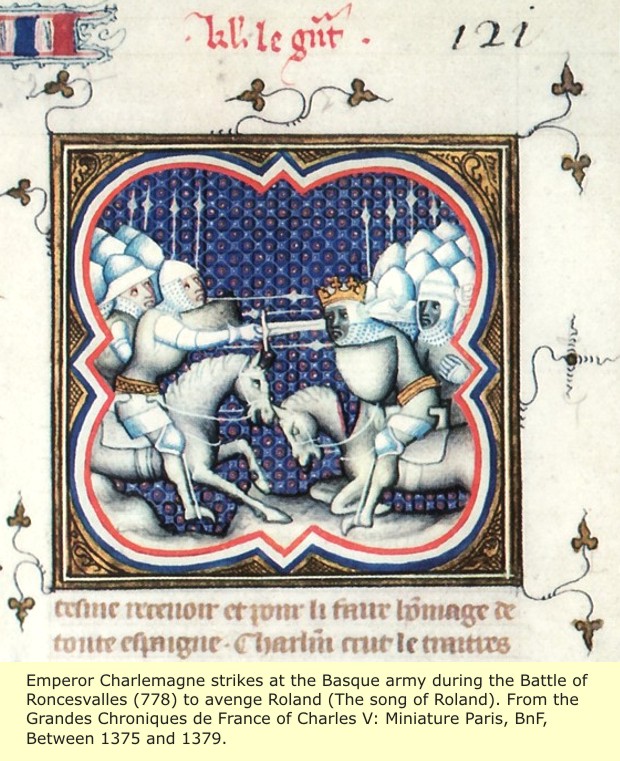     The arrival of the first Portuguese shown below arriving into Japan..Hence the Moors taught Caucasian Europeans how and where to navigate.     Edited by Dino - 13-Jun-2016 at 11:36 |
||
 |
||
Dino 
Janissary 
suspended Joined: 07-Jun-2016 Online Status: Offline Posts: 14 |
 Quote Quote  Reply Reply
 Posted: 13-Jun-2016 at 10:02 Posted: 13-Jun-2016 at 10:02 |
|
|
The Moors were in America (and around the World indicted by their mapping of Antarctica) long before Columbus was. This explains why Columbus "suddenly" had an "urge" to navigate the same year that those European overthrew the Moors in 1492 who we all know had been sailing all the way to China and Japan. It is also a recorded fact that the true navigatorof Columbus's ship was in fact a Moor.
There is a hidden early black history here in America that is hidden by lying Western scholars. The African, and Muslim, Discovery of America – Before Columbus Dr. Abdullah Hakim Quick (Adopted with permission from the book, Deeper Roots, Muslims in the Americas and the Caribbean from before Columbus to the Present, by Dr. Abdullah Hakim Quick, DPB Printers and Booksellers, Cape Town, South Africa. Those interested in further research are strongly urged to read Dr. Quik’s book.) Ancient America was not isolated from the old world as many historians and anthropologists would have us believe. People from both sides of the Atlantic Ocean traveled great distances, mingled with each other and exchanged knowledge and products. Long before Columbus became aware of the possibility of land in the west, Muslims, among other people, had made contact with the Americas and had already left an impression on the Native culture 13. Knowledge, agricultural products, livestock, metals, and other commercial items were exchanged between the two worlds. Evidence leading to establishing the presence of Muslims in ancient America comes from a number of sculptures, oral traditions, eye-witness reports, artifacts, Arabic documents, coins, and inscriptions. In Meso-American art, we see Africans and Semites in positions of power and prestige, especially in trading communities of Mexico. A report in Before Columbus by Cyrus Gordon describes coins found in the southern Caribbean region: “…..off the coast of Venezuela was discovered a hoard of Mediterranean coins with so many duplicates that it cannot well be a numismatist’s collection but rather a supply of cash. Nearly all the coins are Roman, from the reign of Augustus to the 4th century CE. Two of the coins however, are Arabic of the 8th century CE. It is the latter that gives us the terminus a quo (i.e. time after which) of the collection as a whole (which cannot be earlier than the latest coins in the collection). Roman coins continued in use as currency into the medieval times. A Moorish ship, perhaps from Spain or North Africa, seems to have crossed the Atlantic around 800 CE 15.“ The discovery of these coins adds validity to the reports, recorded by Muslim historians and geographers, concerning the journeys of Muslim adventurers and navigators across the Atlantic Ocean. In Muruj adh-Dhahab wa Ma’adin al-Jawhar (The Meadows of Gold and Quarries of Jewels) written around the year 956 CE, Abul Hassan Ali ibn al-Hussain ibn Ali al-Masudi, a historian, geographer, philosopher, and natural scientist, wrote about a young man of Cordoba named Khashkhash ibn Saeed ibn Aswad who crossed the Atlantic Ocean, made contact with people on the other side, and returned in the year 889 CE. Al Masudi wrote: “Some people feel that this ocean is the source of all oceans and in it there have been many strange happenings. We have reported some of them in our book Akhbar az-Zaman. Adventurers have penetrated it at the risk of their lives, some returning safely, others perishing in the attempt. One such man was an in habitant of Andalusia named Khashkhash. He was a young man of Cordoba who gathered a group of young men and went on a voyage on this ocean. After a long time, he returned with a fabulous booty. Every Spaniard (Andalusian) knows his story.” A narration by Abu Bakr ibn Umar al-Qutiyya (not to be confused with the author of Tarikh Iftitah al-Andalus, Ibn al-Qutiyya) relates the story of Ibn Farrukh who landed in February 999 CE in Gando (Great Canary), visited King Guanariga and continued his journey westwards till he found islands he called Capraria and Pluitana. In May of that year he arrived back in Spain. Abu Abd Allah Muhammad al-Idrisi (1090-1180), the famous Arab physician and geographer who established himself in the Arabicised court of King Roger II of Sicily, reported in his extensive work Kitab al-Mamalik wa-l-Masalik, in the 12th century on the journey of a group of seamen who reached the isles of the Americas. Al Idrisi wrote: “A group of seafarers sailed into the sea of darkness and fog (the Atlantic Ocean) from Lisbon in order to discover what was in it and to what extent were its limits. They were a party of eight and they took a boat which was loaded with supplies to last them for months. They sailed for eleven days until they reached turbulent waters with great waves and little light. They thought that they would perish so they turned their boat southward and traveled for twelve days. They finally reached an island that had people and civilization but they were captured and chained for three days. On the fourth day, a translator came speaking the Arabic language! He translated for the King and asked them about their mission. They informed him about themselves, then they were returned to their confinement. When the westerly wind began to blow they were put in a canoe blindfolded, and brought to land after three days sailing. They were left on the shore with their hands tied behind their backs. When the next day came another tribe appeared, freeing them and informing them that between them and their lands was a journey of two months.” This astonishing historical report not only describes contact between Muslim seamen and the Native people of the Americas, but it also describes travel between islands, probably the Bahamas chain or the Lesser Antilles. The islanders had developed the ability to speak Arabic, a language that cannot be mastered by a single contact. They must have been regularly visited by Arabic speaking Muslim merchants or adventurers, or they had lived in Muslim territory. In October, 1929 CE, Khalid Edhem Bey discovered by chance in the library of Serallo, in the city of Istanbul, a map of parchment made in the month of Muharram in the year 919 AH (March 1513). The rare and valuable geographical letter contained, among other legends, the following note: “This chapter explains how this map has been made. Such a map nobody owns at present. By the hands of this poor man it has been composed and now elaborated.” The discovery was very significant. As already stated, it had to do with a parchment in Turkish writing, painted in several colors, with dimensions 1.85×0.60 20. It comprises the Atlantic Ocean with America and the western rim of the world. The other parts of the world, which the map probably included, have been lost. 21 The author of the map, Piri Muhyi’d-Din Re’is was a famous navigator and map maker who died about 1554-55 CE. He wrote a handbook on navigation in the Aegean and the Mediterranean Seas, which was known as Piri Re’is Behriye. Perhaps the map found by Khalil Edhem Bey was part of this handbook, which was presented to Sultan Selim I in 1517 CE, and which would explain how the mysterious parchment was found in Serallo. What is most important to this study, however, is that this map is one of the most conclusive pieces of hard evidence to show the validity of Muslim exploration in the Western hemisphere. Piri Re’is, a Turkish navigator, wrote that he used twenty source-maps, among them eight maps dating from the time of Alexander the Great, an Arab map of India, four Portuguese maps of the Indian Ocean and China, and a map by Columbus of the western area. But Piri’s map contains information that could not have been known by Columbus. It contains the correct relative longitude across Africa, and across the Atlantic, all the way from the meridian of Alexandria, Egypt, to Brazil. The mid-Atlantic islands are shown with remarkable accuracy. The Cape Verde islands, Madeira Islands, and the Azores are shown in perfect longitude. The Canary Islands are off by one degree latitude. The Andes are shown on this map of 1513 CE. The Andes were not “discovered” by Europeans until 1527 CE with the coming of Pizarro. The Atrato River (in present day Columbia) is shown for a distance of 300 miles from the sea. Its eastward bend at latitude 5 degrees north is correct. The Amazon is shown twice, once on the equator of the main grid and once on the equator of the small grid. The island of Marajo is shown at the mouth of the Amazon, but this island was not officially discovered by Europeans until 1543 CE. Someone must have traveled throughout the upper part of the South America exploring rivers and recording information. 22 The Haji Ahmed map of 1559 CE, also supports the validity of a Muslim presence in the Americas long before Columbus. He was also a Turkish map-maker who, in the tradition of Islamic scientists and technicians of his age benefited from the knowledge of the ancient Egyptians, Hindus, Greeks, Romans, and Phoenicians, and took it to a higher level of development. Muslims had led the world in Astronomy, Mathematics, Chemistry, Medicine, History, Geography, Navigation, etc. for hundreds of years before the 16th century, and Haji Ahmed followed in their footsteps. The Eastern Hemisphere, on his map, is poorly done and probably was based on the sources of Ptolemy. The Western side, however, was mapped so well that it is hard to believe that anyone could have drawn this map who did not have access to maps of people well-travelled in the Americas. The shapes of North and South America are surprisingly modern, especially the western coasts. Their drawing on a highly sophisticated spherical projection puts the map about two centuries ahead of the cartography of that time. 24 Another map of Florida, based on a French expedition of the 1564, shows three names that demonstrate an earlier Muslim settlement in that area. They were written as follows: Mayarca (Majorca) Cadica (Cadiz) Marracou (Marrakesh) 25 How could these names have been used by people if they had not made contact with North African or Andalusian Muslims? Anti-diffusionist scholars have countered earlier claims to a pre-Columbian presence in the Americas by casting doubt on the nautical ability of Muslim or African seamen, and by citing the difficulty of crossing the Atlantic Ocean. In 1969 CE, the Scandinavian scientist, Thor Heyerdahl crossed the Atlantic for the second time, starting from the North African port, Safi, and arriving in Barbados, West Indies. His craft was made by Africans of indigenous papyrus, thereby proving that not only could North African or West African sailors have crossed the Atlantic Ocean, but that even the ancient Egyptians could have done so. It is now well known that the currents coming off the Iberian Peninsula and western coastline of Africa will take a ship easily into the Caribbean or to the east coast of South America (present day Brazil).
Edited by Dino - 20-Jun-2016 at 09:19 |
||
 |
||
Dino 
Janissary 
suspended Joined: 07-Jun-2016 Online Status: Offline Posts: 14 |
 Quote Quote  Reply Reply
 Posted: 13-Jun-2016 at 04:55 Posted: 13-Jun-2016 at 04:55 |
|
|
The story of the Moors is never told in full truth by most Western scholars. The Moors are often represented as beginning something other than the black African Muslims that they were. The acknowledgement of the legacy of the Moors in Europe will completely shatter the concept of white superiority and black inferiority myth that the West in particular the U.S. is apparently emotionally attached to. That is why whenever the Moors are mentioned the narrators always emphasize that they were "Muslims" while never stating that they were also African or even showing one of the thousands of depictions of these black Moors (and their like their earlier black European predecessors or their descendants) that line the streets and halls of Europe to this day.  These African Muslims literally civilized the wild tribes from the Caucus who had ran rampant throughout Western Europe after being pushed into this region by the invading Huns. These wild warring Caucasian tribes did not establish any civilization to pick up after they brought down the Western Roman Empire. As a result of there being little to no intellectual stimulation in Europe the continent fell into the Dark Ages until the 8th century C.E. when the Moors arrived into Europe from Africa. The European "Renaissance" was only possible through this African Muslim cultural domination for 700 years in which highly advanced and civilized cultures (based largely on the recollection of the advanced knowledge from ancient Kemet or "Egypt" that the Greeks stole/plagiarized and Westerners blatantly ignore the fact that they did just to attribute those contributions to a late Indo-European people) permeated throughout Western Europe via what was Muslim controlled Spain.  Thus, after Muhammad's Islamic army took Egypt in 640 A.D. and then went on to conquer all of North Africa. The Berbers no-doubt saw this new Black army as an opportunity; so rather than fight, the Berbers joined forces with the Islamic army.  In 711 A.D. A Berber army led by general Tariq ibn Ziyad, invaded Iberia (Spain) and overthrew the Visigoths (Western Goths):  Who were one of two main branches of the Goths, an east Germanic tribe, who over the period of only one hundred years, had migrated from eastern Europe, thru Greece, thru Italy, and finally down into the Iberian peninsula.  In Iberia (Spain and Portugal), the Berbers, now known as Moors, created a highly advanced civilization and culture, famous for it’s art, architecture, and centers of learning. While having rule over Spain: The Berbers, who themselves fifty years earlier had been forced to accept Islam, now sometimes forced the inhabitants of Iberia to do the same. Though the number of original "Moors" remained small, many native Iberian inhabitants converted to Islam. According to Ronald Segal, some 5.6 million of Iberia's 7 million inhabitants were Muslim by 1200 A.D, virtually all of them native inhabitants. According to historian Richard A. Fletcher, the number of Arabs who settled in Iberia was very small. There were about 900,000 Berbers and about 90,000 Arabs in Iberia. 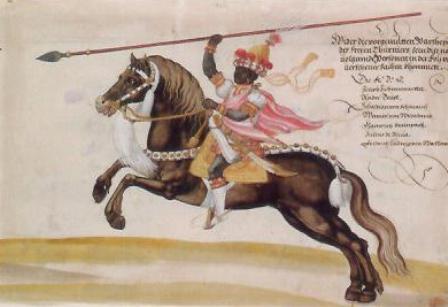    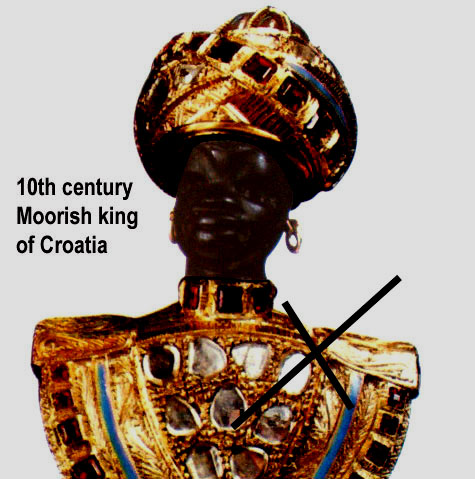 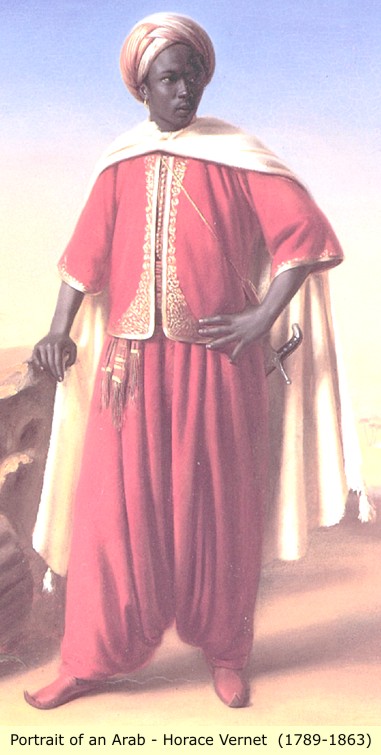  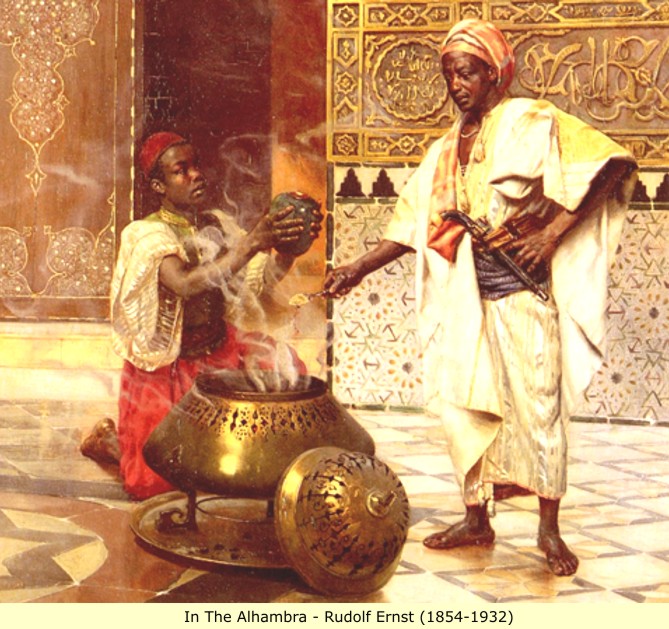 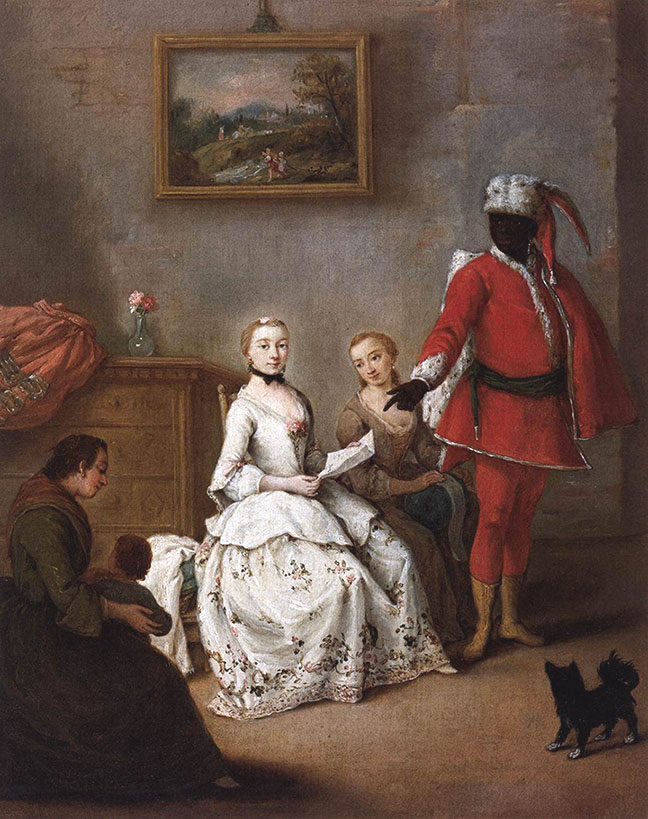 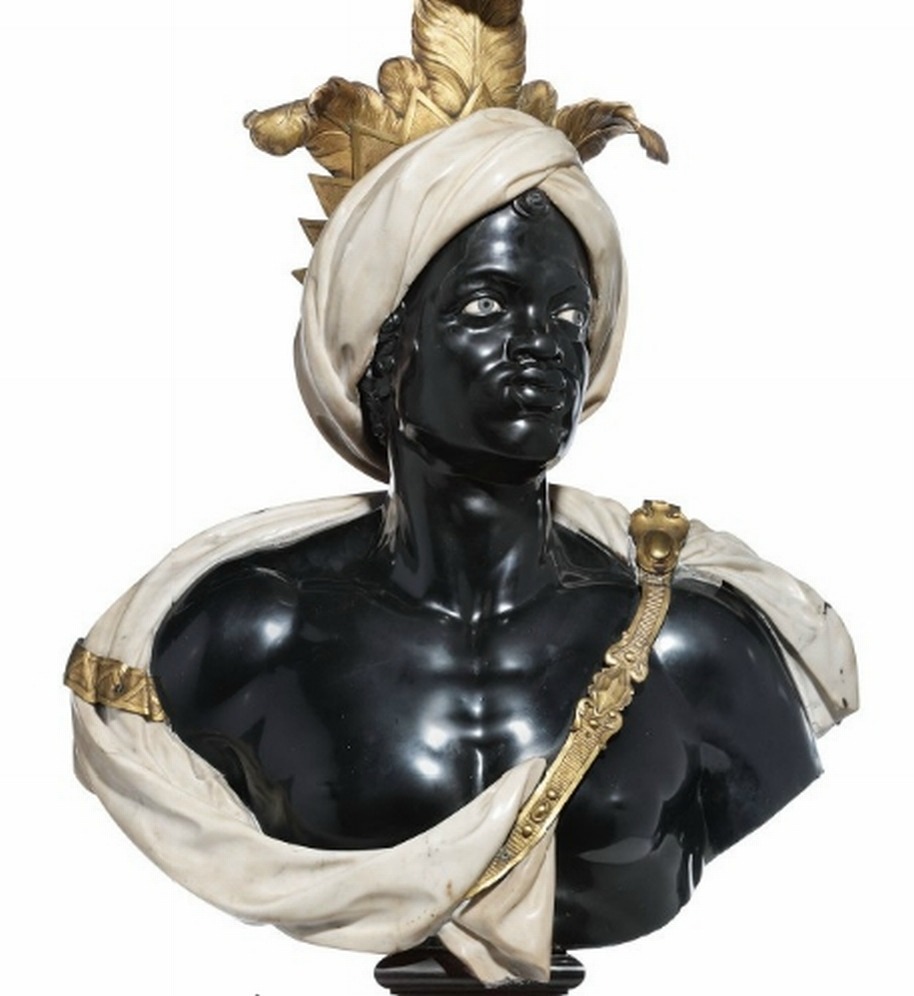 Muslim Spain and European Culture Hidden Colors clip Dean Derhak When you think of European culture, one of the first things that may come to your mind is the renaissance. Many of the roots of European culture can be traced back to that glorious time of art, science, commerce and architecture. But did you know that long before the renaissance there was a place of humanistic beauty in Muslim Spain? Not only was it artistic, scientific and commercial, but it also exhibited incredible tolerance, imagination and poetry. Moors, as the Spaniards call the Muslims, populated Spain for nearly 700 years. As you'll see, it was their civilization that enlightened Europe and brought it out of the dark ages to usher in the renaissance. Many of their cultural and intellectual influences still live with us today. Way back during the eighth century, Europe was still knee-deep in the Medieval period. That's not the only thing they were knee-deep in. In his book, "The Day The Universe Changed," the historian James Burke describes how the typical European townspeople lived: "The inhabitants threw all their refuse into the drains in the center of the narrow streets. The stench must have been overwhelming, though it appears to have gone virtually unnoticed. Mixed with excrement and urine would be the soiled reeds and straw used to cover the dirt floors. This squalid society was organized under a feudal system and had little that would resemble a commercial economy. Along with other restrictions, the Catholic Church forbade the lending of money - which didn't help get things booming much. "Anti-Semitism, previously rare, began to increase. Money lending, which was forbidden by the Church, was permitted under Jewish law." (Burke, 1985, p. 32) Jews worked to develop a currency although they were heavily persecuted for it. Medieval Europe was a miserable lot, which ran high in illiteracy, superstition, barbarism and filth. During this same time, Arabs entered Europe from the South. ABD AL-RAHMAN I, a survivor of a family of caliphs of the Arab empire, reached Spain in the mid-700's. He became the first Caliph of Al-Andalus, the Moorish part of Spain, which occupied most of the Iberian Peninsula. He also set up the UMAYYAD Dynasty that ruled Al-Andalus for over three-hundred years. (Grolier, History of Spain). Al Andalus means, "the land of the Vandals," from which comes the modern name Andalusia. At first, the land resembled the rest of Europe in all its squalor. But within two-hundred years the Moors had turned Al-Andalus into a bastion of culture, commerce and beauty. "Irrigation systems imported from Syria and Arabia turned the dry plains... into an agricultural cornucopia. Olives and wheat had always grown there. The Arabs added pomegranates, oranges, lemons, aubergines, artichokes, cumin, coriander, bananas, almonds, pams, henna, woad, madder, saffron, sugar-cane, cotton, rice, figs, grapes, peaches, apricots and rice." (Burke, 1985, p. 37) By the beginning of the ninth century, Moorish Spain was the gem of Europe with its capital city, Cordova. With the establishment of Abdurrahman III - "the great caliphate of Cordova" - came the golden age of Al-Andalus. Cordova, in southern Spain, was the intellectual center of Europe. 1. The Spanish occupation by the Moors began in 711 AD when an African army, under their leader Tariq ibn-Ziyad, crossed the Strait of Gibraltar from northern Africa and invaded the Iberian peninsula ‘Andalus' (Spain under the Visigoths). 2. A European scholar sympathetic to the Spaniards remembered the conquest in this way: a. [T]he reins of their (Moors) horses were as fire, their faces black as pitch, their eyes shone like burning candles, their horses were swift as leopards and the riders fiercer than a wolf in a sheepfold at night . . . The noble Goths [the German rulers of Spain to whom Roderick belonged] were broken in an hour, quicker than tongue can tell. Oh luckless Spain! Quoted in Edward Scobie, The Moors and Portugal's Global Expansion, in Golden Age of the Moor, ed Ivan Van Sertima, US, Transaction Publishers, 1992, p.336 3. The Moors, who ruled Spain for 800 years, introduced new scientific techniques to Europe, such as an astrolabe, a device for measuring the position of the stars and planets. Scientific progress in Astronomy, Chemistry, Physics, Mathematics, Geography and Philosophy flourished in Moorish Spain 4. Basil Davidson, one of the most noted historians recognized and declared that there were no lands at that time (the eighth century) "more admired by its neighbours, or more comfortable to live in, than a rich African civilization which took shape in Spain" 5. At its height, Córdova, the heart of Moorish territory in Spain, was the most modern city in Europe. The streets were well-paved, with raised sidewalks for pedestrians. During the night, ten miles of streets were well illuminated by lamps. (This was hundreds of years before there was a paved street in Paris or a street lamp in London.) Cordova had 900 public baths - we are told that a poor Moor would go without bread rather than soap! 6. The Great Mosque of Córdoba (La Mezquita) is still one of the architectural wonders of the world in spite of later Spanish disfigurements. Its low scarlet and gold roof, supported by 1,000 columns of marble, jasper and and porphyry, was lit by thousands of brass and silver lamps which burned perfumed oil. 7. Education was universal in Moorish Spain, available to all, while in Christian Europe ninety-nine percent of the population were illiterate, and even kings could neither read nor write. At that time, Europe had only two universities, the Moors had seventeen great universities! These were located in Almeria, Cordova, Granada, Juen, Malaga, Seville, and Toledo. 8. In the tenth and eleventh centuries, public libraries in Europe were non-existent, while Moorish Spain could boast of more than seventy, of which the one in Cordova housed six hundred thousand manuscripts. 9. Over 4,000 Arabic words and Arabic-derived phrases have been absorbed into the Spanish language. Words beginning with "al," for example, are derived from Arabic. Arabic words such as algebra, alcohol, chemistry, nadir, alkaline, and cipher entered the language. Even words such as checkmate, influenza, typhoon, orange, and cable can be traced back to Arabic origins. 10. The most significant Moorish musician was known as Ziryab (the Blackbird) who arrived in Spain in 822. The Moors introduced earliest versions of several instruments, including the Lute or el oud, the guitar or kithara and the Lyre. Ziryab changed the style of eating by breaking meals into separate courses beginning with soup and ending with desserts. 11. The Moors introduced paper to Europe and Arabic numerals, which replaced the clumsy Roman system. 12. The Moors introduced many new crops including the orange, lemon, peach, apricot, fig, sugar cane, dates, ginger and pomegranate as well as saffron, sugar cane, cotton, silk and rice which remain some of Spain's main products today. 13. The Moorish rulers lived in sumptuous palaces, while the monarchs of Germany, France, and England dwelt in big barns, with no windows and no chimneys, and with only a hole in the roof for the exit of smoke. One such Moorish palace ‘Alhambra' (literally "the red one") in Granada is one of Spain's architectural masterpieces. Alhambra was the seat of Muslim rulers from the 13th century to the end of the 15th century. The Alhambra is a UNESCO World Heritage Site 14. It was through Africa that the new knowledge of China, India, and Arabia reached Europe The Moors brought the Compass from China into Europe. 15. The Moors ruled and occupied Lisbon (named "Lashbuna" by the Moors) and the rest of the country until well into the twelfth century. They were finally defeated and driven out by the forces of King Alfonso Henriques. The scene of this battle was the Castelo de Sao Jorge or the 'Castle of St. George. An interesting fact to note about the Islamic conquest of Northern Africa, was that while previously Roman controlled "Egypt" was conquered by the invading Arabs, these Arabs were repelled not once but twice by the Christian Nubians further south into Africa (Sudan). The only reason that Arabs and Islam came south of the Sahara was through the peace treaty that the Arabs came with the third time, which was the longest lasting peace treaty in recorded history. This treaty allowed Islam into the area where it became it's own power over time. Understand that these religious invaders got checked at the front door when they came into Africa. In 642, 'Amr ibn al-'As sent a column of 20,000 horsemen under his cousin Uqba ibn Nafi against Makurra. They managed to get as far as Dongola, the capital of Makurra. However, in a rare turn of events, the Arab forces were beaten back. According to historian Al-Baladhuri, the Muslims found that the Nubians fought strongly and met them with showers of arrows. The majority of the Arab forces returned with wounded and blinded eyes. It was thus that the Nubians were called 'the pupil smiters'. Al-Baladhuri also states, quoting from one of his sources that went to Nubia twice during the rule of `Umar ibn al-Khattab. "One day they came out against us and formed a line; we wanted to use swords, but we were not able to, and they shot at us and put out eyes to the number of one hundred and fifty." (hence Ta-Seti or Land of the Bow) This is why Europeans (starting with the Portuguese) came into Africa and initially had to respect the Africans for 400 years before dividing and conquering those same Africans who entrusted them with their knowledge.
Edited by Dino - 20-Jun-2016 at 09:20 |
||
 |
||
Post Reply 
|
Page <12 |
| Forum Jump | Forum Permissions  You cannot post new topics in this forum You cannot reply to topics in this forum You cannot delete your posts in this forum You cannot edit your posts in this forum You cannot create polls in this forum You cannot vote in polls in this forum |
Bulletin Board Software by Web Wiz Forums® version 9.56a [Free Express Edition]
Copyright ©2001-2009 Web Wiz
This page was generated in 0.141 seconds.
Copyright ©2001-2009 Web Wiz
This page was generated in 0.141 seconds.












 Printable Version
Printable Version Google
Google Delicious
Delicious Digg
Digg StumbleUpon
StumbleUpon Windows Live
Windows Live Yahoo Bookmarks
Yahoo Bookmarks reddit
reddit Facebook
Facebook MySpace
MySpace Newsvine
Newsvine Furl
Furl Topic Options
Topic Options